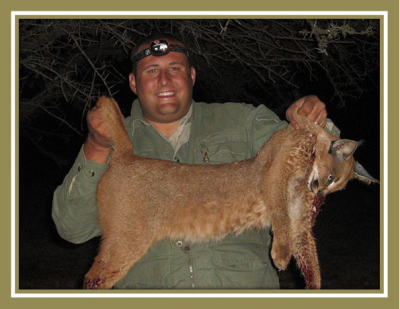News
Latest Lion Aid News
Spare a thought for caracals
Monday 8th September 2014
|
A trophy and at the same time saving small livestock?
First of all what is a caracal? A few facts:
There no reliable estimates of caracal populations, and their population trend is “unknown” according to the IUCN. CITES lists African caracals on Appendix II and Asian caracals on Appendix I. As caracals are “capable” of taking small domestic livestock, they are often subject to persecution. Over the years 1931-1952 an average of 2,219 caracals EACH YEAR were killed in control operations in the Karoo, South Africa. Similarly, Namibian farmers responding to a government questionnaire reported killing up to 2,800 caracals in 1981. These days, CITES export records show that from 2003-2012, South Africa exported 871 skins, 144 “bodies”, 1152 skulls and 4824 hunting trophies. Namibia came a distant second with 239 skins, 10 bodies, 58 skulls and 652 trophies. By far the greatest percentage of the caracal hunting trophies went to the USA of course. South Africa exported 246 live caracals, most to dubious destinations like the Arab Emirates, China and Myanmar (Burma). South Africa also exported 45 live caracals to the Czech Republic, something worthy of investigation. Strangely, there are hardly any organizations with direct concerns for caracals. It would seem they are badly needed, but as Africa’s “fourth cat”, and the world public not really aware of this species, it would seem there are few champions of one of the world’s most beautiful cats. Picture credit: africanskyhunting.co.za If you have not already signed up to our mailing list, you can add your name here and keep up to date with our ongoing work and, most importantly, DONATE to support our work to conserve the remaining fragile lion populations. Thank you. Tags: Caracals Categories: Events/Fundraising, Extinction, Domesticating Animals |
Posted by Chris Macsween at 18:30
No comments have been posted yet.
Add a new comment
Existing user
New user sign up




